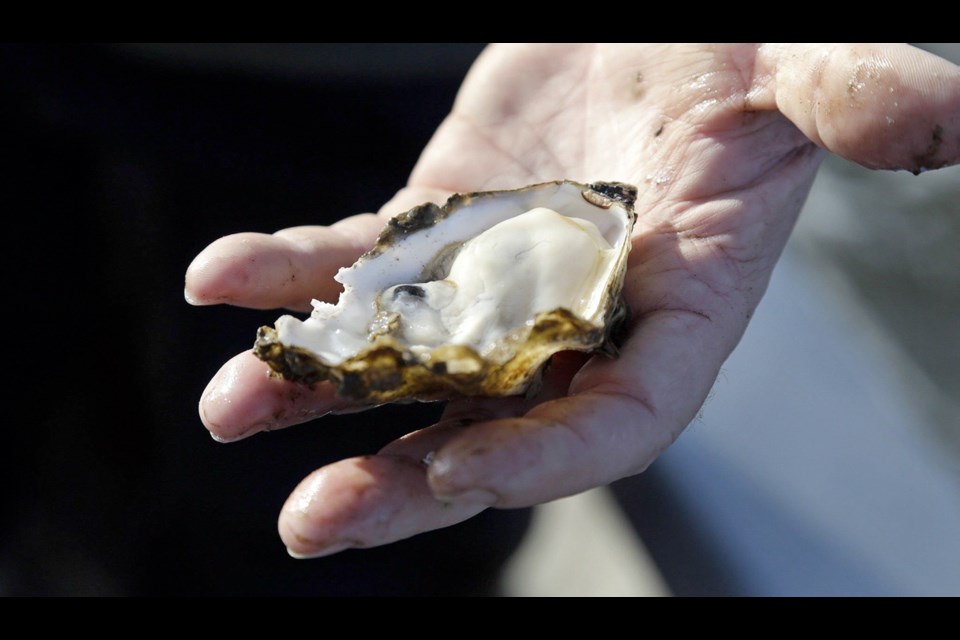A Vancouver Island University professor is embarking on research to learn about norovirus in the marine environment, where it could batter the multimillion-dollar shellfish industry.
Tim Green was recently awarded $300,000 to search for environmental markers that might indicate the presence of norovirus, and find ways to track its movement through the marine environment.
Norovirus rarely causes lasting damage. But an infection brings on a nasty bout of gastroenteritis, with gut cramps, diarrhea and vomiting. It can be contracted when people eat contaminated oysters raw. The norovirus is destroyed when oysters are cooked, leaving them safe to eat.
But raw oysters are popular enough that the saąúĽĘ´«Ă˝ Centre for Disease Control has occasionally put out warnings and even shut down farms when infections are reported.
The last closure occurred in 2018 after 40 people became ill. The contamination was traced to two saąúĽĘ´«Ă˝ oyster farms that were subsequently closed.
The closures and alerts are estimated to have cost the industry as much as one-third of its revenue that year, said Green.
In 2018, the saąúĽĘ´«Ă˝ Ministry of Agriculture estimated oysters generated nearly $30 million annually in wholesale revenue, and farmed oysters accounted for 40 per cent of the annual shellfish harvest.
The ministry and Genome saąúĽĘ´«Ă˝, a non-profit government-supported research organization, have funded Green and the VIU research project for two years.
The goal of the research is to look for ways to alert oyster farmers of the likely presence of norovirus in the marine environment before their stock becomes contaminated. Researchers also want to get an idea of how far the virus can be spread.
Since it takes only small amounts of norovirus to sicken a person, the research will not attempt to hunt down the virus.
“We are trying to think a little outside the box to come up with a solution,” Green said from Nanaimo.
Green said norovirus is not naturally found in the marine environment but can remain infectious for weeks in the ocean. It’s expelled by people when they are sick and makes its way into the marine environment, usually via sewage.
Since oysters filter sea water to collect their nutrients, the norovirus can become concentrated inside an oyster, making them dangerous to eat raw. But tracking a tiny norovirus in the ocean before it is filtered out by something like an oyster is tough.
So it was decided that a good way to alert oyster farmers of the possible presence of norovirus was to let them know when their shellfish-farming environments are contaminated with sewage.
Using submersible fluorometers, devices that measures the light emitted by certain substances, the scientists will test for the presence of laundry-soap brightening agents, which make white clothing glow when hit by ultraviolet lights.
Those fluorescing compounds do not occur naturally in a marine environment, so their presence might signal contamination by human sewage that could contain norovirus.
Likewise, the scientists will test for the presence of caffeine, since most people drink a caffeinated beverage at some point in the day, from coffee to cola. The body filters out the caffeine and excretes it in urine, so its presence might also indicate the presence of human sewage.
Green said human sewage enters the marine environment from a number of sources, from boats illegally discharging into the ocean to shoreline septic tanks, septic fields that aren’t functioning properly and leaky sewage pipes.
“[In] those environments where we farm oysters, there really shouldn’t be any human sewage at all,” he said. “But there is a whole range of things that could release sewage into the environment.”
Green also hopes to answer questions about norovirus’s ability to move around the ocean. “When it enters the marine environment, does it stay fairly local or does it drift on the currents?” he asked. “Is norovirus always present in the marine environment or is it intermittently showing up?
“We hope to get some understanding of where sewage leaks might be problematic, whether the fluorometer works and can the sewage disperse from those areas.”



